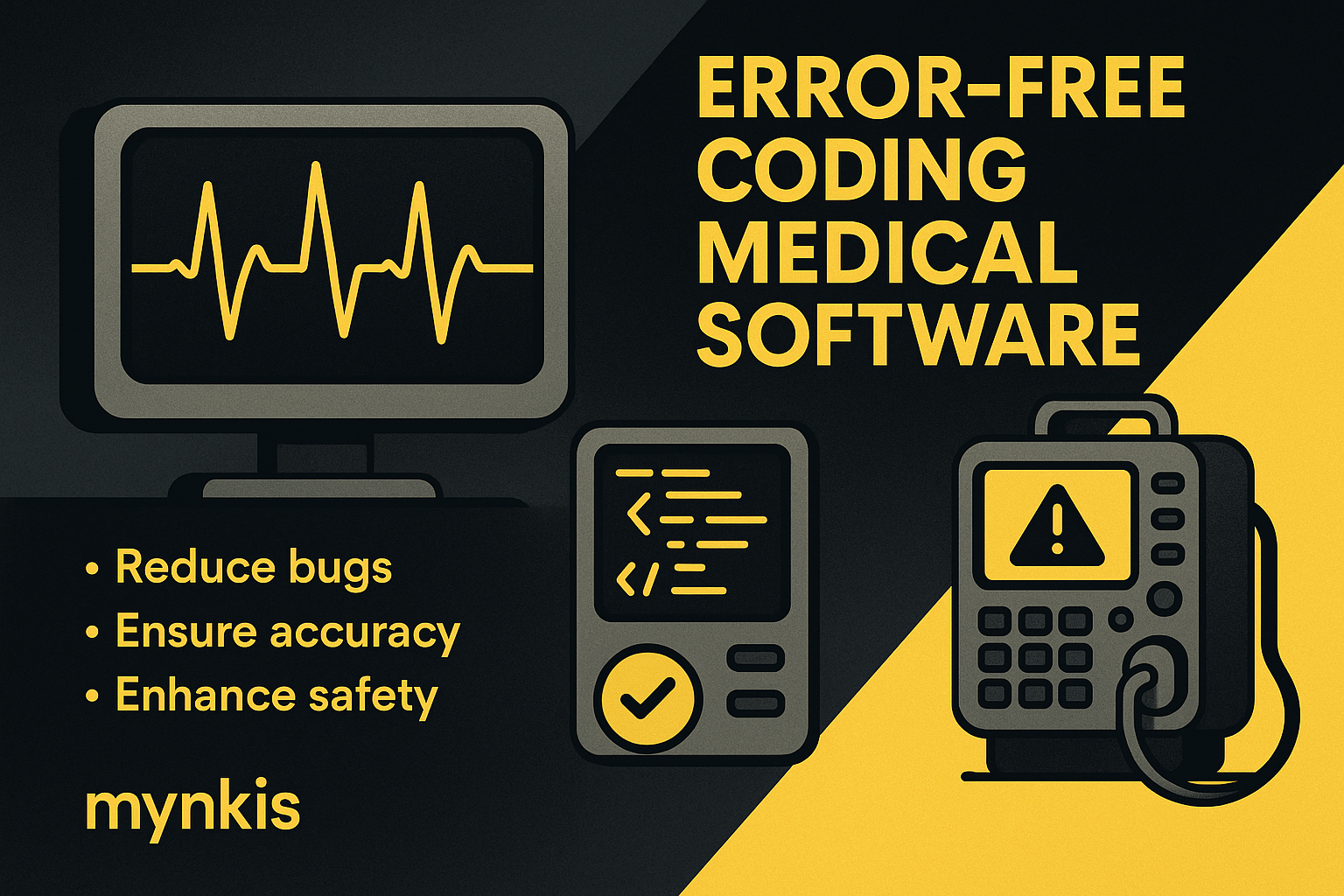Schedule a Demo
Let's talk straight: perfection isn't easy to come by, but when it comes to coding for healthcare, it's non-negotiable. I'm here to guide you through crafting software that's as precise as a surgeon's scalpel. From dealing with patient portals to managing sensitive data, the stakes couldn't be higher. Let's dive into some vital developer tips to ensure your medical software build is error-free, secure, and compliant.
In the realm of medical software, compliance isn't just a checkbox—it's your north star. You have to wrap your head around regulations like HIPAA, HITECH, and various state laws. These aren't just bureaucratic hurdles; they're safeguards for patient privacy and system integrity. When designing your software, ensure every line of code respects these compliance requirements. It’s about layering security and aligning with regulatory standards from the ground up.
Testing in medical software development isn't merely important—it's absolutely crucial. Don't rely solely on automated tests; combine them with manual testing for a holistic approach. Consider writing unit tests as you code to capture issues early in the development cycle. Performance testing is also key; medical systems need to function reliably under high load, especially during peak times. I recommend integrating thorough user acceptance testing (UAT) with real medical professionals to fine-tune your system's usability and functionality.
A strong code review process can be your secret weapon in avoiding errors. Set up a culture where peer reviews are standard practice, not an afterthought. Encourage detailed, constructive feedback, and make sure that multiple sets of eyes are examining every line. This not only catches bugs but also enhances overall code quality. Remember, in medical software, a second, third, and even fourth pair of eyes can be the difference between life and death.
When crafting medical software, the implementation of CI/CD pipelines is pivotal. It facilitates frequent code integration and automated deployment, slashing the risk of errors. Imagine your build pipeline meticulously checking each new code snippet for correctness and integration fidelity. This continuous feedback loop allows developers to rectify issues instantly, fostering a pristine and reliable codebase.
Transparency in medical software demands meticulous documentation. Every function, API, and significant code block should be lavishly documented. Your documentation isn't just for developers—it's a lifeline for audits, compliance checks, and potential maintenance by future developers. Trust me, when you're neck-deep in coding complexity, or when facing an audit, well-crafted docs will save the day.
Medical data is as precious as it gets, and securing it requires relentless attention to detail. Start with secure coding practices: validate all inputs, use parameterized queries to prevent SQL injection, and secure your API endpoints. I'd argue that embedding security right from the planning phase all the way to deployment will streamline the battle against vulnerabilities. Don’t forget regular security audits and updates, as the digital landscape is an ever-evolving battleground.
Select your development tools with precision. Using modern IDEs with integrated debugging and version control systems can significantly boost your efficiency and accuracy. Languages like Python, Java, and JavaScript may be common, but consider what frameworks and libraries have strong community support and established security features. Tools like GitLab, Jenkins, or GitHub Actions for CI/CD, Postman for API testing, and SonarQube for code quality should be in your tech stack. Selecting the right toolkit empowers you to build more secure, error-free systems.
Creating medical software is a team effort. Fostering an environment where developers collaborate not just on the build, but also on solving problems, brainstorming solutions, and sharing knowledge, can revolutionize your project's outcomes. Whether it's through daily stand-ups, sprint reviews, or pair programming sessions, nurturing this collaborative ethos ensures everyone is on the same page and can contribute to identifying and resolving errors.
As configurations vary across different environments, from development to production, mismanagement can introduce errors. Establishing a robust configuration management practice mitigates this risk. Use environment-specific configuration files, manage them with tools like Ansible or Chef, and automate deployment to ensure consistency. Avoid hardcoding configurations into your software; instead, use environment variables or configuration services for more flexibility and error prevention.
Medical tech evolves rapidly, and staying current is not just beneficial—it's a necessity. Subscribe to journals, follow leaders like the American Medical Association or the Health Information and Management Systems Society (HIMSS), and attend webinars. I've found that engaging with these resources keeps my knowledge sharp and my approach to development current. By understanding the latest trends, you can anticipate future needs and design software that's future-proofed.
In medical software development, it’s not just about knowing how to code; it's about ongoing learning. A culture that encourages curiosity and continuous education will lead to better software. Implement weekly learning sessions or coding bootcamps, and encourage certifications in relevant areas like security, compliance, or emerging technologies. This dedication to learning enables developers to grow their skills, contributing to fewer errors in your software builds.
Performance isn't just a nice-to-have in medical software—it's a must-have. Slow, inefficient code can lead to real-world problems, from delayed diagnoses to suboptimal patient experiences. Focus on writing optimized algorithms, using caching effectively, and tuning database queries. Remember, performance optimization is a critical part of ensuring your software runs error-free in a high-stakes environment.
While functionality is paramount, never underestimate the power of a stellar user experience in medical software. Your software should be intuitive enough for busy medical staff to navigate effortlessly. Consider accessibility standards to accommodate users of all abilities. By prioritizing UX, you not only reduce errors but also enhance the overall quality of care your software can help provide.
Always plan for the unexpected in medical software development. Build in robust error handling, maintain regular backups, and design recovery mechanisms for data loss. Think ahead with scenario planning for what might happen if core systems fail; this proactive approach will ensure your software is not just error-free but resilient and prepared for any disruptions that may arise.
